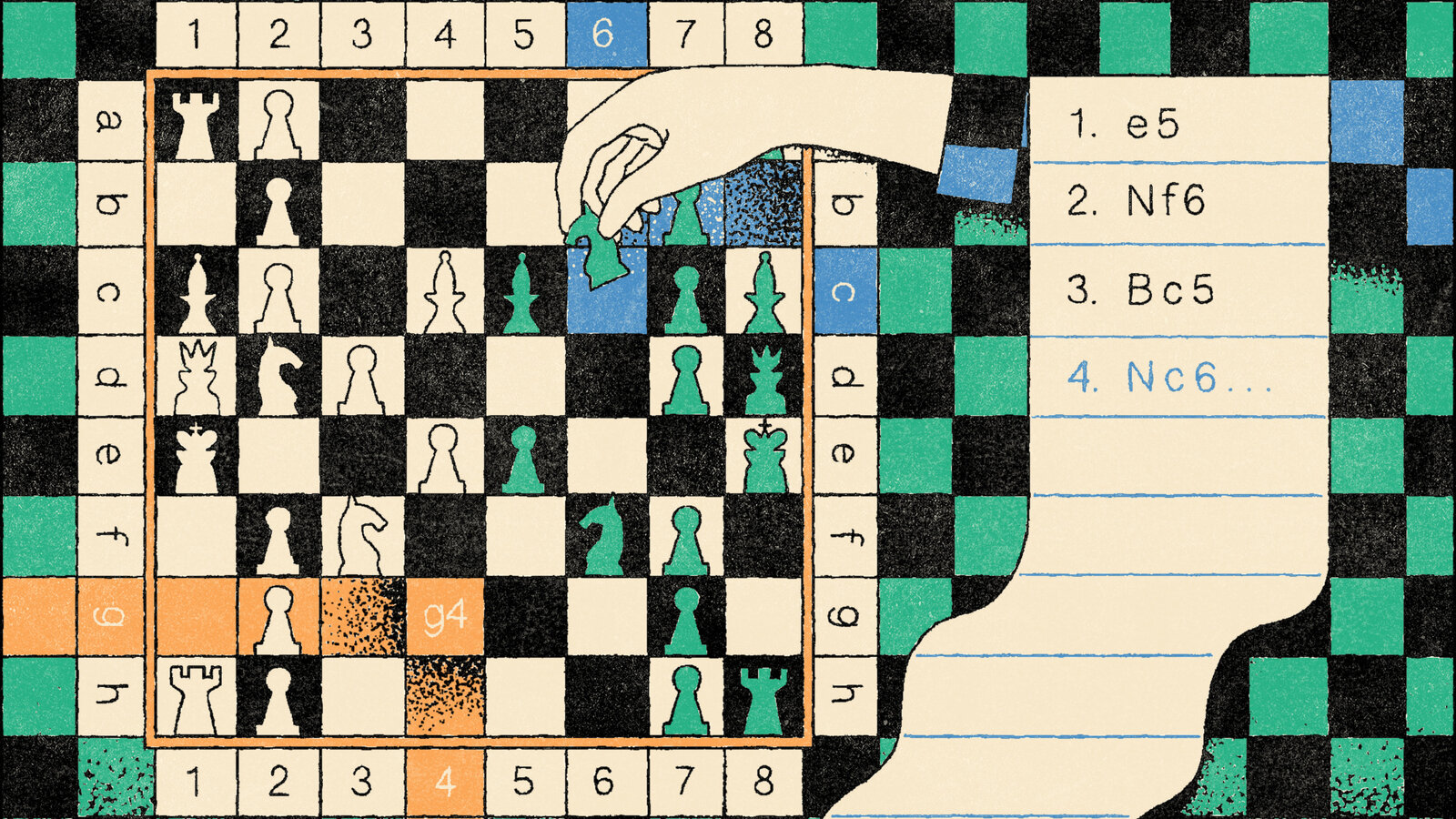Chess, often called the “game of kings,” is a battle of minds where every move can mean the difference between victory and defeat. While there’s no single “best move” that works in every position, certain moves throughout chess history have achieved legendary status for their brilliance, creativity, and game-changing impact. Understanding these moves through algebraic chess notation not only helps us appreciate their beauty but also teaches us valuable lessons about chess strategy and tactics.
Understanding Algebraic Chess Notation
Before diving into the best moves, let’s quickly review algebraic notation. This system uses letters and numbers to describe each move:
- Files (columns) are labeled a-h from left to right
- Ranks (rows) are numbered 1-8 from bottom to top (White’s perspective)
- Pieces are denoted by letters: K (King), Q (Queen), R (Rook), B (Bishop), N (Knight)
- Pawns have no letter designation
- Special symbols include: x (captures), + (check), # (checkmate), 0-0 (kingside castling), 0-0-0 (queenside castling)
For a more detailed explanation of chess notation, visit the official FIDE Laws of Chess or check out Chess.com’s comprehensive notation guide.
What Makes a Move “The Best”?
The “best move” in any position depends on several factors:
- Tactical brilliance – moves that sacrifice material for a winning attack
- Strategic depth – moves that improve position in subtle but powerful ways
- Psychological impact – moves that surprise and demoralize opponents
- Historical significance – moves that influenced chess theory or decided important games
- Aesthetic beauty – moves that are simply elegant and memorable
Legendary Moves in Chess History
The Immortal Game: Anderssen vs. Kieseritzky (1851)
Move: Qf6+
In this legendary game, Adolf Anderssen played one of the most famous sacrificial attacks in chess history. After a series of brilliant sacrifices, the move Qf6+ forced checkmate, showcasing the power of piece coordination over material advantage.
You can replay this historic game on Chess.com or Lichess.
The Game of the Century: Byrne vs. Fischer (1956)
Move: …Be6!!
Thirteen-year-old Bobby Fischer stunned the chess world with this quiet bishop retreat. The move Be6 looked passive but was actually a profound positional sacrifice that led to a winning attack. This game demonstrated that the “best move” isn’t always the most obvious one.
Watch analysis of this famous game on Chess.com or explore it on ChessGames.com.
Capablanca’s Endgame Mastery
Move: Rd1+
José Raúl Capablanca was renowned for finding the single best move in complex endgames. His precise technique often involved moves like Rd1+ that looked simple but contained layers of calculation, proving that the best move combines simplicity with depth.
Learn more about Capablanca’s games at ChessGames.com.
Tal’s Magical Sacrifices
Move: Rxf7!
Mikhail Tal, the “Magician from Riga,” was famous for his brilliant sacrifices. Moves like Rxf7! exemplified his style—bold, calculated risks that created beautiful attacking positions. These moves showed that the best move sometimes requires courage to see beyond immediate consequences.
Explore Tal’s brilliant games on Chess.com or read about his tactical style on ChessBase.
Kasparov’s Computer-Like Precision
Move: Nxe4!
Garry Kasparov’s career was filled with moves that combined human intuition with computer-like calculation. His tactical shots like Nxe4! in critical positions demonstrated that the best move often requires seeing many moves ahead while maintaining strategic understanding.
Study Kasparov’s games on Kasparov.com or explore his matches on ChessGames.com.
Categories of “Best Moves”
1. The Brilliant Sacrifice
Moves like Qxh7+! or Rxf7! that sacrifice material for a winning attack. These moves require:
- Accurate calculation
- Courage to give up material
- Understanding of attacking principles
2. The Quiet Killer
Moves like h6 or a4 that look innocent but contain deep strategic threats. These moves demonstrate:
- Positional understanding
- Patience in building advantages
- Ability to see long-term plans
3. The Defensive Masterpiece
Moves like Rf8+ or Qd1 that turn desperate positions into drawn or winning games. These moves show:
- Resourcefulness under pressure
- Deep calculation in defense
- Ability to find counterplay
4. The Endgame Precision
Moves like Kg6 or b5 that win seemingly drawn endgames. These moves require:
- Technical knowledge
- Precise calculation
- Understanding of endgame principles
How to Find Your Best Moves
1. Calculate Deeply
The best move often requires seeing several moves ahead. Practice calculating variations systematically, considering your opponent’s best responses.
Improve your calculation skills with tactics trainers on Chess.com, Lichess, or ChessTempo.
2. Consider All Candidate Moves
Don’t just look at the obvious moves. Sometimes the best move is the one you almost didn’t consider.
3. Evaluate Strategically
Ask yourself: Does this move improve my position? Does it create threats? Does it solve problems?
Learn strategic principles from Chess.com’s lessons or ChessNetwork on YouTube.
4. Trust Your Intuition
Sometimes the best move “feels” right. Experienced players develop pattern recognition that guides them to strong moves.
Build pattern recognition by studying master games on ChessGames.com or using Forward Chess for digital chess books.
The Psychology of the Best Move
The best move isn’t just about the position on the board—it’s also about the psychological impact on your opponent. A move like Qh5! might be objectively equal to another move, but if it creates complex positions where your opponent is more likely to make mistakes, it could be the practical “best move” in that game.
Modern Computer Analysis
Today’s chess engines can calculate millions of positions per second, often finding the objectively “best move” in any position. However, the human element remains crucial because:
- The best move for a human might differ from the computer’s choice
- Time pressure affects move selection
- Psychological factors influence practical play
- Style and preparation matter in competitive play
Try analyzing your games with powerful engines like Stockfish (free and open-source) or use online analysis tools on Chess.com and Lichess. For deeper engine analysis, consider ChessBase or SCID (free chess database).
Common Patterns in Great Moves
The Deflection
Move: Rxd7! – Forcing a piece away from defending something important
The Decoy
Move: Qf7+ – Luring the opponent’s pieces to bad squares
The Clearance
Move: Nd5! – Opening lines for other pieces to create threats
The Interference
Move: Bd4 – Blocking the opponent’s pieces from coordinating
Conclusion
While there’s no single “best move” in chess, the moves that have achieved legendary status share common characteristics: they demonstrate deep calculation, strategic understanding, and often a touch of creativity that transcends pure logic. Whether it’s Anderssen’s brilliant Qf6+ or Fischer’s quiet Be6, these moves remind us that chess is both an art and a science.
The best move in any position is the one that gives you the greatest practical chances of success, considering not just the objective evaluation but also the time on the clock, your opponent’s style, and the tournament situation. As you develop your chess skills, focus on understanding the principles behind these great moves rather than just memorizing them.
Remember, every chess game offers opportunities to find your own “best move”—that perfect blend of calculation, intuition, and creativity that makes chess the beautiful game it is. The key is to keep studying, keep playing, and keep looking for those magical moments when the best move reveals itself on the board.
For continued learning, consider these excellent resources:
- Chess.com’s comprehensive learning center
- Lichess’s free study tools
- ChessBase’s training materials
- Internet Chess Club (ICC) for competitive play
- Chess24’s video lessons with grandmaster instruction
“Chess is mental torture.” – Garry Kasparov
And sometimes, that torture leads to the most beautiful moves ever played.





